I'm trying to rehost the designer, but every time I slap a workflow into the designer:
_workflowDesigner = new WorkflowDesigner();
// added to UI here
Properties.Content = _workflowDesigner.PropertyInspectorView;
_workflowDesigner.Load(myWorkflowInstance);
where myWorkflowInstance is a workflow defined in a referenced assembly. I have done the magic Register to get the default activity metadata registered:
new DesignerMetadata().Register();
and I've registered all my custom NativeActivities:
public static void Register(IEnumerable<Type> activityTypes)
{
// activityTypes are all my custom NativeActivities
// and all workflows (root of System.Activities.Activity)
var builder = new AttributeTableBuilder();
var attrGroups =
from x in activityTypes
from y in x.GetCustomAttributes(true).OfType<Attribute>()
group y by x into g
select g;
foreach (var typeGroup in attrGroups)
builder.AddCustomAttributes(typeGroup.Key, typeGroup.ToArray());
MetadataStore.AddAttributeTable(builder.CreateTable());
}
yet, when I load an activity in the designer this is what I get:

What am I missing here?
I'm thinking it has something to do with the fact that these workflows are compiled and only exist within the Implementation property of an Activity...
